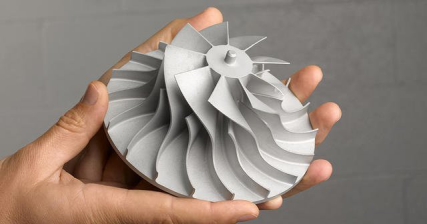If you're new to the world of 3D printing, you may be wondering what materials are available for printing. In this blog post, we will discuss the different types of materials that can be used in 3D printers and their features. We’ll also tell you how to choose the right material for your project. So let’s read on for more details.
There are a variety of materials that can be used in different types of 3D printing processes, including metals, plastics, ceramics, and composites. Each type of material has its own unique set of properties that make it well-suited for certain applications.
Metals are often used in 3D printing because they can be melted and formed into complex shapes. Common metals used in 3D printing include aluminum, stainless steel, and titanium. However, a challenge when using metals is that they can be difficult to work with and you may need to be familiar with their property and practice more.
Plastics are one of the most popular materials used in 3D printing because they are relatively easy to work with and come in a wide variety of colors. Some common plastics used in 3D printing include ABS plastic, PLA plastic, and PETG plastic. However, plastics can be brittle and may not be as strong as some other materials. So you should be more careful when handling them.
Ceramics are frequently utilized in 3D printing since they have a high melting point and can be molded into extremely complex shapes. Common ceramics used in 3D printing include alumina, zirconia, and silicon carbide. Although ceramics are beautiful, one problem you may face is that they can be challenging to use, because it is brittle and break easily if not handled correctly. You need to be careful to avoid any accidents. In addition, you may need a specific machine when printing with them.
Because composites are both metals and plastics, so they are also been frequently used in 3D printing. Carbon fiber-reinforced plastic, as well as glass fiber-reinforced plastic, are two of the most utilized composite materials in 3D printing. For example, a carbon fiber composite can be created that is lightweight and strong. For printing with composites, you may need extra effort and time to learn their behavior and how to work with them.
There are many considerations to take into account when choosing a material for your 3D printing project.
Cost is often one of the most important considerations when choosing a material for a 3D printing project. Some materials, such as metals and ceramics, can be quite expensive. Others, such as plastics, are relatively affordable. It's important to weigh the cost of the materials against the performance of your product to ensure that you're getting the best value for your money.
Different materials vary in durability. Metals and composites are more durable and often used in products that need to withstand extreme conditions, such as medical implants and aerospace parts. On the other hand, less durable plastics are often used in products that don't require as much strength, such as consumer goods.
Some materials, such as ceramics and plastics, can be molded into complex shapes. This makes them well-suited for applications where the shape of the product is important, such as prosthetics and eyeglass frames. Other materials, such as metals, have high melting points and can be used in products that need to withstand high temperatures. 
Metals and composites can be difficult to work with if you don't have experience working with them. Consider your own skill level and the amount of time you're willing to invest in learning how to use a new material before selecting one for your project.
When you're deciding what material to use for your project, it's crucial that you think about how said material will affect the environment. Some materials, such as plastics, can be difficult to recycle. Others, such as metals and ceramics, can be recycled but require more energy to do so.
There are a variety of materials that can be used for 3D printing. When you're deciding what material to use for your project, it's crucial that you take all of these factors into account. With the right material, you can create a high-quality product that meets your needs and budget. Thanks for reading!
Copyright © 2023 infomorespace.com. All rights reserved.